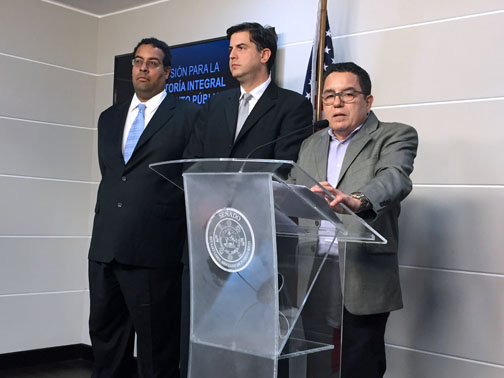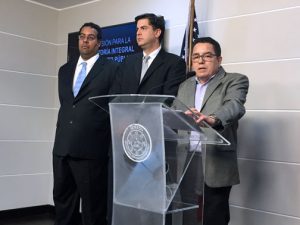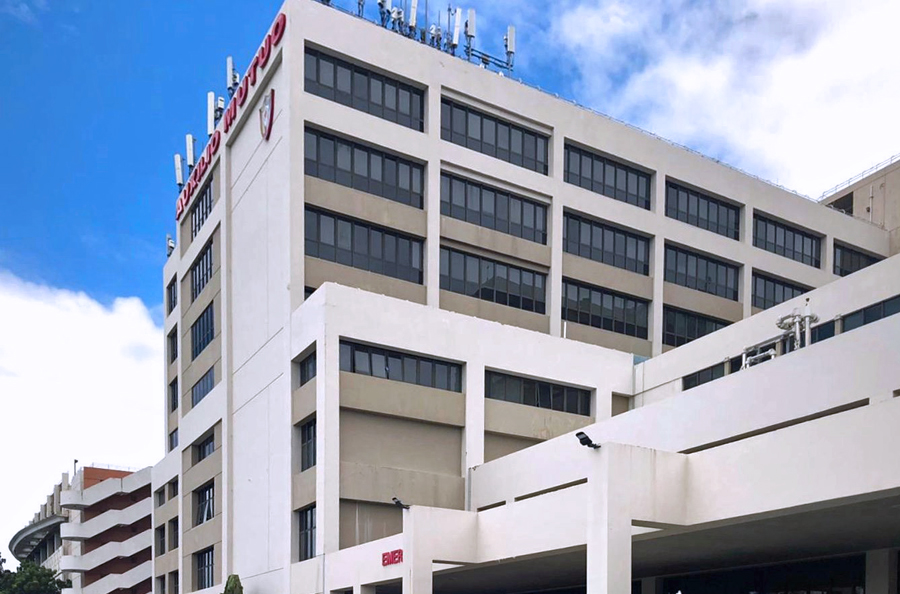Study casts doubt on legality of Puerto Rico debt


From left: Attorney Alvin Velázquez, Economist Mario Marazzi and Commission Chair Roberto Pagán offer details of the pre-audit Thursday.
An independent commission established by Puerto Rico’s government has issued a report casting doubt on the legality of the island’s debt, which could be declared null by a court if it decides the Commonwealth borrowed without authorization.
The report released Thursday by the Puerto Rico Commission for the Comprehensive Audit of the Public Credit highlights several ways in which the Puerto Rican government may have violated its own Constitution, including:
- Failing to main a balanced budget and instead borrowing more than $30 billion over the past 37 years to cover a deficit;
- Spending as much as 25 percent of internal revenues on debt, possibly violating the constitutional prohibition on spending more than 15 percent for that purpose;
- Refinancing debt with more loans instead of paying the original debt, a practice known as “scoop and toss,” which has been going on so long it may violate the constitutional provision that prohibits Puerto Rico from issuing any loan for more than 30 years.
If the independent process finds these practices occurred, a significant portion, about $30 billion, of Puerto Rico’s $69 billion debt may not have to be paid back, as it was used to balance budgets — which is illegal according to the Constitution.
The scope of the pre-audit report released Thursday was limited to a review of documentation produced by the Government Development Bank associated with the two most recent full faith and credit debt issues — the $3.5 billion General Obligation bond offer sold in March 2014, and the 2015 issue of some $900 million of Tax Revenue Anticipation Notes, known as TRANs.
“The findings are part of the Commission’s goal of getting a basic understanding of the debt and the applicable legal norms,” said Roberto Pagán-Rodríguez, who chairs the 17-person Commission formed in July 2015, but that began its analysis in January 2016.
The Commission is holding off on a full investigation of more than 40 years of Commonwealth borrowing until it receives government funding, he said. The independent group has been promised some $2 million from the current budget, which has yet to be disbursed.
The pre-audit also found that Puerto Rico has some $37 billion in Capital Appreciation Bonds outstanding, an unusual type of debt in which the borrower does not pay interest or principal until the bond comes due. Interest continues to accrue even though the borrower does not have to pay until the debt is due.
Of the outstanding amount, some $23 billion belong to Sales Tax Financing Corp. (known as COFINA for its initials in Spanish) creditors. One of the bonds that the Commonwealth must pay on July 1 is a CAB issued in 1998 for $14 million, and that the Commonwealth must now pay $38 million on, after adding interest payments.
“The Commission must study the effect of the use of those bonds upon the total existing debt. There’s one example of a CAB issued by COFINA in 2007 that doesn’t mature until 20156, which could have legal implications given that the Constitution prohibits taking out loans for more than 30 years,” Pagán said.
Another issue uncovered in the pre-audit related to whether the Commonwealth and its advisors and underwriters complied with relevant Securities and Exchange Commission disclosure rules, said Attorney Alvin Velázquez, who along with Certified Public Accountant John Johns and Economists Mario Marazzi and José Alameda drafted the report.











